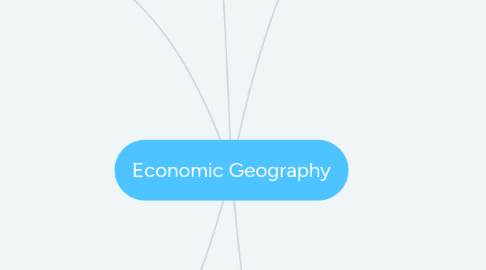
1. Core and Periphery
1.1. Model developed by Immanuel Wallerstein to describe the connection between developed and developing countries
1.2. Core
1.2.1. Made up of the developed, rich countries
1.2.2. Located usually North of the equator near Europe and North America
1.3. Periphery
1.3.1. Made up of the poorer developing countries
1.3.2. Located outside economic centers
1.4. Semi-Periphery
1.4.1. Not qualified as core but are doing better than periphery
1.4.2. Usually located between core and periphery and can benefit from the geographic proximity to the core
2. Rostow Model
2.1. Stage 1: Traditional Society
2.1.1. Economy based on subsistence agriculture, fishing, forestry, and some mining.
2.1.2. Under developed countries (UDC) are in stage 1.
2.2. Stage 2: Pre-take Off
2.2.1. Building infrastructure that is needed before development can take place. Ex. transportation systems, capital, energy, and communication systems.
2.2.2. Less developed countries (LDC) are in stage 2.
2.3. Stsgae 3: Take off
2.3.1. Introduction and rapid growth (industrial revolution) of manufacturing industries.
2.3.2. Developed countries (DC) are in stage 3.
2.4. Stage 4: Drive to Maturity
2.4.1. New ideas and technology improve and replace older industries, and economic growth spreads throughout the country.
2.4.2. More developed countries (MDC) are in stage 4.
2.5. Stage 5: High Mass Consumption
2.5.1. People are wealthy and buy goods and services. Welfare systems and trade also develop.
2.5.2. Very developed countries (VDC) are in stage 5.
3. Economic Ladder
3.1. UDC
3.1.1. Countries that typically have poverty and less economic development than other nations. Most citizens have poor living standard, healthcare, and education.
3.2. LDC
3.2.1. Countries that have poverty, but more economic development beginning. People still have poor living conditions, but areas are nearing development.
3.3. DC
3.3.1. Countries with developing economies . Living conditions, healthcare, and education have improved for most people.
3.4. MDC
3.4.1. Countries have developed extensively and living conditions have greatly improved. Technological advances and advances in living conditions, healthcare, and education are evident.
3.5. VDC
3.5.1. Countries that have fully developed economically. Almost everyone has excellent living conditions, healthcare, and education.
4. Economic Sectors
4.1. The divide provides a map of where certain sectors are in globally, nationally, and locally
4.2. Primary Sector
4.2.1. Deals with removal and extraction of resources from the ground
4.2.2. Careers: farming, mining, fishing, etc.
4.2.3. Practiced in poorer, underdeveloped regions and countries
4.3. Secondary Sector
4.3.1. Deals with transforming, processing, or manufacturing products
4.3.2. Careers: manufacturing vehicles, metal working, and construction
4.3.3. Focussed in developing countries (countries slightly more developed than underdeveloped countries)
4.4. Tertiary Sector
4.4.1. Deals with providing intellectual or physical services such as selling an item
4.4.2. Careers: lawyers, bankers, teachers and car salespeople
4.4.3. Most prevalent in developed countries (countries more developed than developing countries)
4.5. Quaternary Sector
4.5.1. Deals with research in order to discover and improve current technologies
4.5.2. Careers: consulting or R&D (research and design for a company)
4.5.3. focussed in more developed countries (more developed than developed countries)
4.6. Quinary Sectror
4.6.1. Deals with high level decision making from the leaders of the other economic sectors
4.6.2. Careers: government jobs, universities, and cultural/media leaders
5. 4 Factors of Production
5.1. They are the building blocks of the economy used to produce goods
5.2. Land
5.2.1. Deals with natural resources that can be obtained from the earth
5.2.1.1. Renewable: Limitless supply of that resources such as water or sunlight
5.2.1.2. Nonrenewable: Limited supply of that resource such as oil or coal
5.3. Labor
5.3.1. Effort or service provided by humans within a place
5.3.1.1. Determined by population and skill
5.3.1.1.1. High population means more labor and cheaper as well
5.3.1.1.2. Unskilled labor: labor that requires little skills and no education
5.3.1.1.3. Skilled labor: jobs requiring skills and formal education to complete
5.4. Capital
5.4.1. Anyrthing used to produce goods and services
5.4.1.1. Usually deals with money or monetary value
5.5. Entrepreneurship opportunities
5.5.1. Refers to the ability for one to take action
5.5.1.1. How willing is one to risk their factors of production to produce something people will buy
5.5.1.2. They pursue new ideas and inventions that benefit everyone
